Choosing the right accommodation is one of the most critical decisions when planning a trip to Spiti Valley. The stark and stunning beauty of Spiti, nestled in the high-altitude cold desert of Himachal Pradesh, offers travelers a unique experience. Whether you are on a Spiti bike trip, a family vacation, or an adventurous backpacking journey, your choice between homestays and Spiti Valley hotels can significantly impact your overall experience.
Spiti Valley is famous for its rugged terrain, ancient monasteries, and a unique blend of Indian and Tibetan cultures. The valley’s remote location and challenging weather conditions necessitate careful planning for accommodation. This blog will delve into the pros and cons of homestays and hotels in Spiti Valley, and guide you on choosing the best option based on various parameters.
What are Homestays and Hotels?
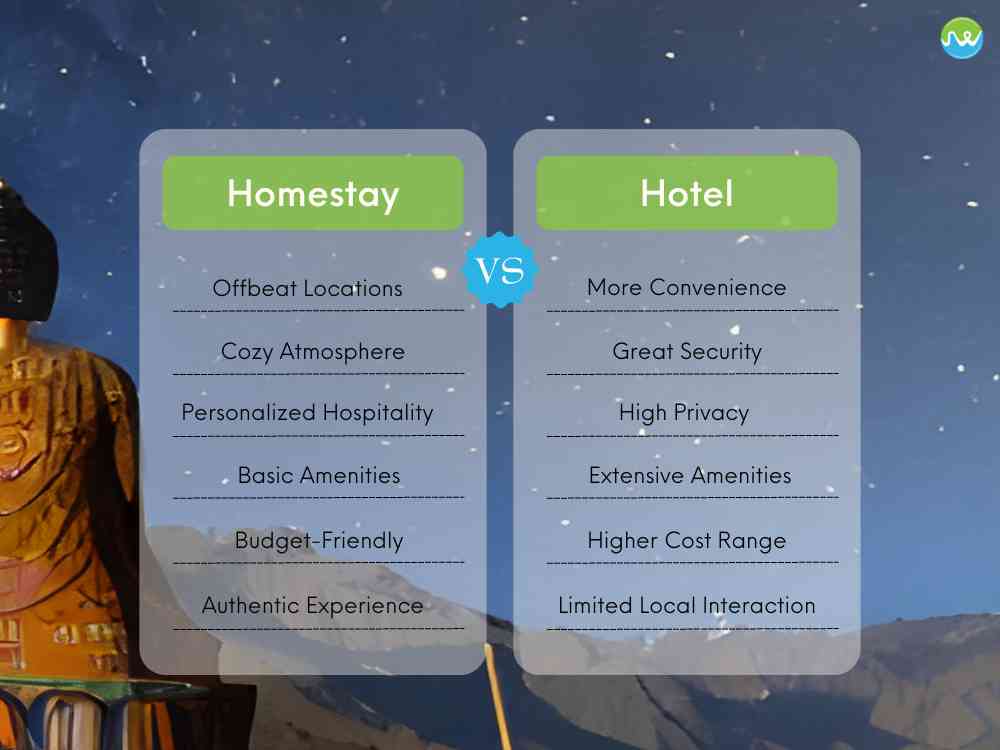
Homestay
On the other hand, a homestay is when you stay in someone’s home, apartment, or other non-hotel accommodation that has been converted into hospitality lodging. The main idea is to provide a more personalized, local experience. In a homestay, you’ll have your room and may interact with the host family, becoming an “additional family member” to some degree. The level of interaction varies depending on the family and your preferences. Costs can vary, but homestays are often cheaper than hotels, especially for families or groups who can split the cost of a whole apartment or house.
Hotel
Hotels are well-established commercial accommodations that provide a range of amenities and services, such as a front desk, housekeeping, room service, and other luxurious facilities like a swimming pool or gym. They offer a more standardized experience and cater to a wide range of guests. Hotels typically have set check-in and check-out times, and you’ll interact with staff rather than the property owners.
Read more: Offbeat Places to Visit in Spiti
Weather in Spiti
Before we dive into the details of accommodation in Spiti, it’s essential to understand the weather in Spiti Valley, as it plays a crucial role in planning your stay.
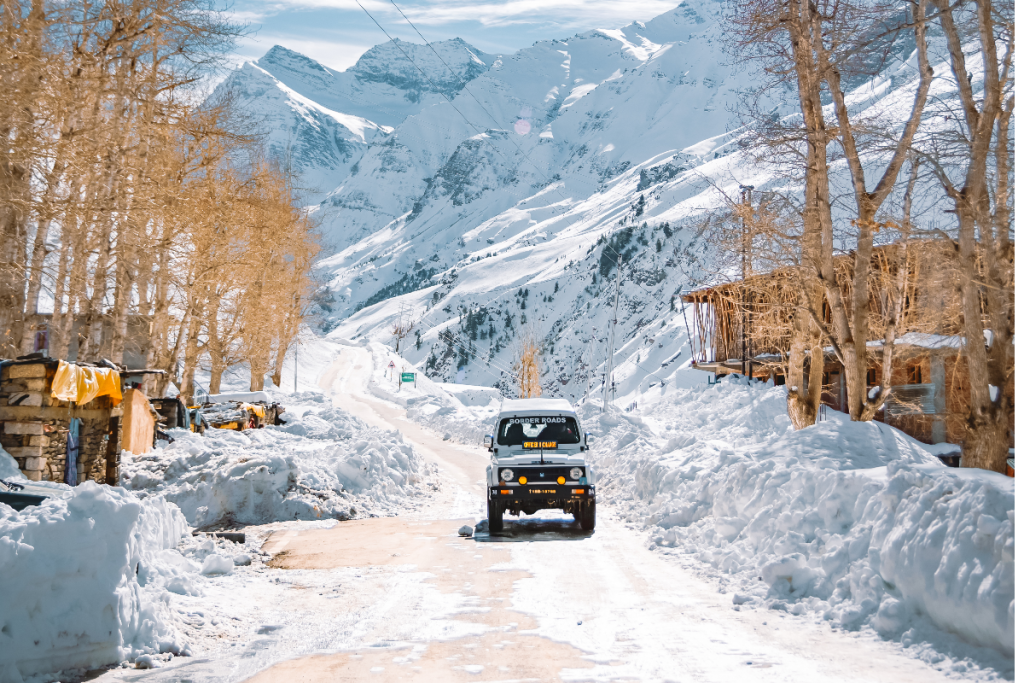
Spiti Weather and Implications
Summer (June to September): This is the best time to visit Spiti Valley. The weather is pleasant, with temperatures ranging from 15°C to 20°C during the day. Nights can be chilly, dropping to around 5°C. The roads are clear, making it accessible for road trips and treks.
Winter (October to April): Spiti experiences harsh winters with temperatures plunging to 20°C or lower. Heavy snowfall blocks roads, making many parts of the valley inaccessible. Only essential services remain operational, and accommodation options are limited.
What works in both?
Spiti Homestay
- Staying with a local family provides deep insight into the local culture, traditions, and way of life.
- Homestays in Spiti often offer personalized attention and hospitality, making you feel like part of the family.
- Enjoy homemade meals prepared with local ingredients, offering a taste of traditional Spiti cuisine.
- Spiti homestays are typically more budget-friendly than hotels, making them ideal for backpackers and budget travelers.
- Many homestays in Spiti are located in remote villages, providing a tranquil environment and great for exploring offbeat locations.
- While basic, many homestays offer cozy and comfortable accommodations. In winter, traditional heating methods like Bukhari (wood stoves) provide warmth.
Spiti Hotel
- Hotels in Spiti Valley generally offer more comfortable and convenient amenities, such as room service, attached bathrooms, and WiFi.
- Staff are trained to cater to the needs of tourists, ensuring a hassle-free stay.
- Spiti Valley hotels offer a wide range of price points, and prices are usually fixed, making it easier to plan your budget.
- Hotels are often located in easily accessible areas, close to major attractions and transportation hubs.
- Hotels offer more privacy, with dedicated rooms and services.
- However, Spiti Valley hotels may not be functional at several major spots during the winter, because the footfall in winter is low, and the electricity and water supply of hotels in Spiti freeze.
Hotels in Spiti
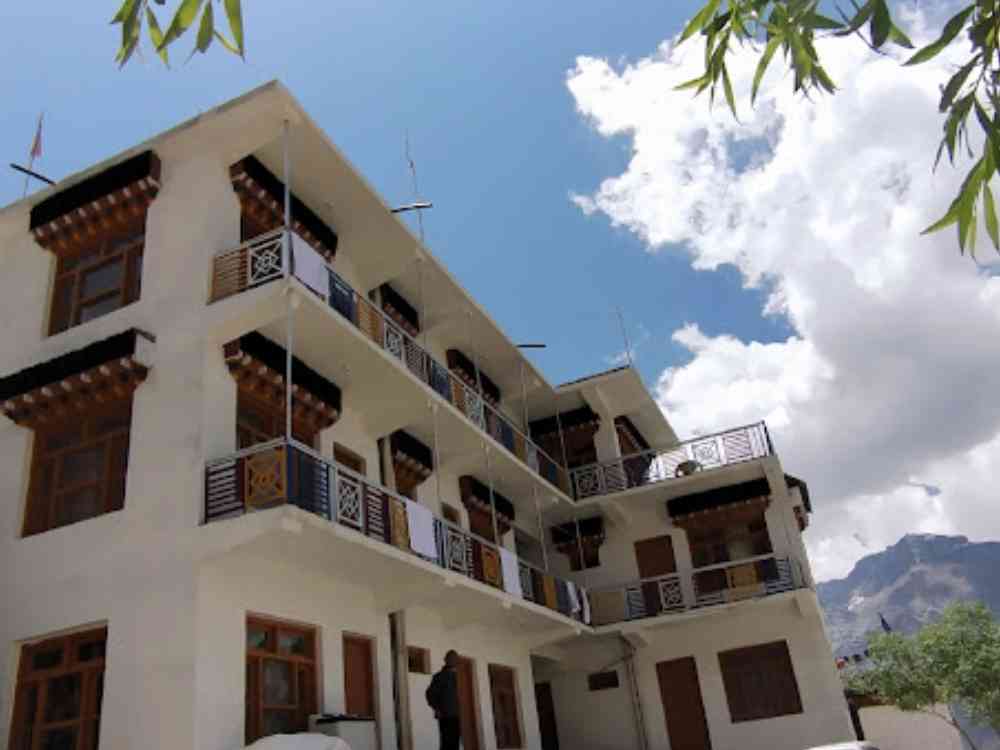
- Address: Gramphu-Batal-Kaza Rd, Kaza, Kaza Khas, Himachal Pradesh 172114
- Contact Number: 094183 27760
- Address: House no. 146, Police Station Road New, Kaza, Himachal Pradesh 172114
- Contact Number: 078764 55275
- Address: New Kaza, near petrol pump, Himachal Pradesh 172114
- Address: Lake, opposite Nako, Nako, Himachal Pradesh 172112
- Contact Number: 094187 59493
- Address: V.P.O, Old Monastery Road, Dhankhar, Dhar Nipti, Himachal Pradesh 172114
- Contact Number: 094592 62520
Homestays in Spiti
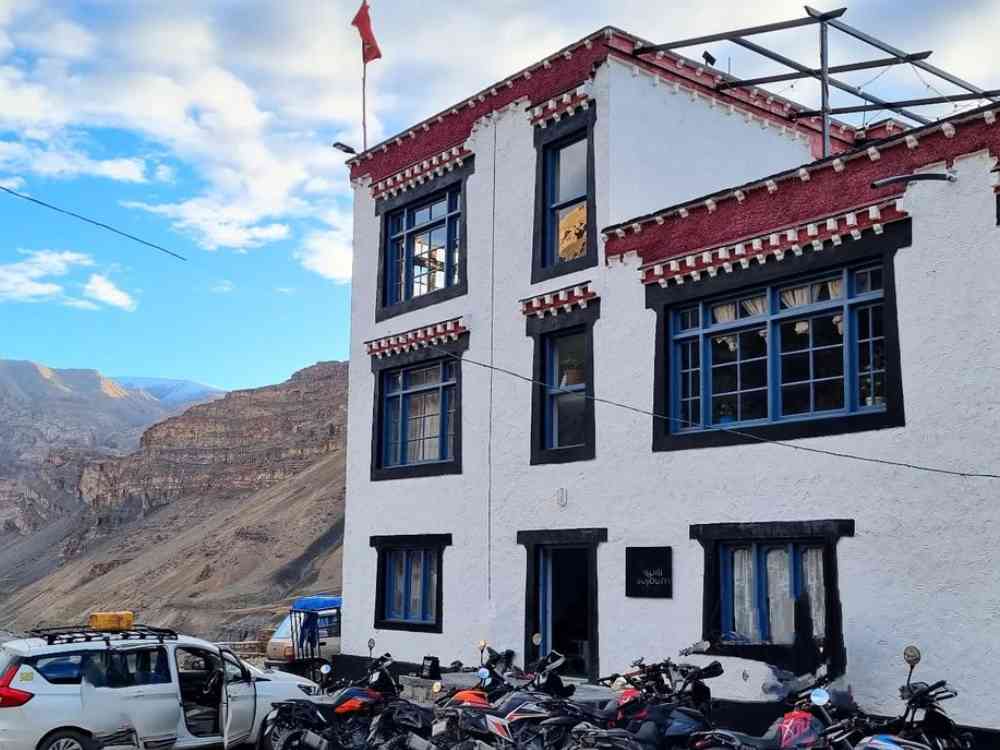
- Address: Rangrik Kaza, Tehsil Spiti Distt: Lahaul & Spiti, Kaza, Himachal Pradesh 172114
- Contact Number: 070183 00591
- Address: Gramphu-Batal-Kaza Rd, Kaza, Kaza Soma, Himachal Pradesh 172114
- Contact Number: 089884 65809
- Address: 63G8+CW8, near SDM Office, Kaza, Kaza Khas, Himachal Pradesh 172114
- Contact Number: 098052 56300
- Address: Kibber, Chicham Khas, Himachal Pradesh 172114
- Contact Number: 094182 01991
- Address: 32.357468, 77.924144, Dhar Pangmo, Himachal Pradesh 172114
- Contact Number: 088513 28541
Remember
- Plan Ahead: Especially in winter, book your accommodation in advance to ensure availability.
- Check Reviews: Read reviews and ratings to get an idea of the quality and service.
- Balance Your Stay: If possible, experience both homestays and hotels to enjoy the best of both worlds.
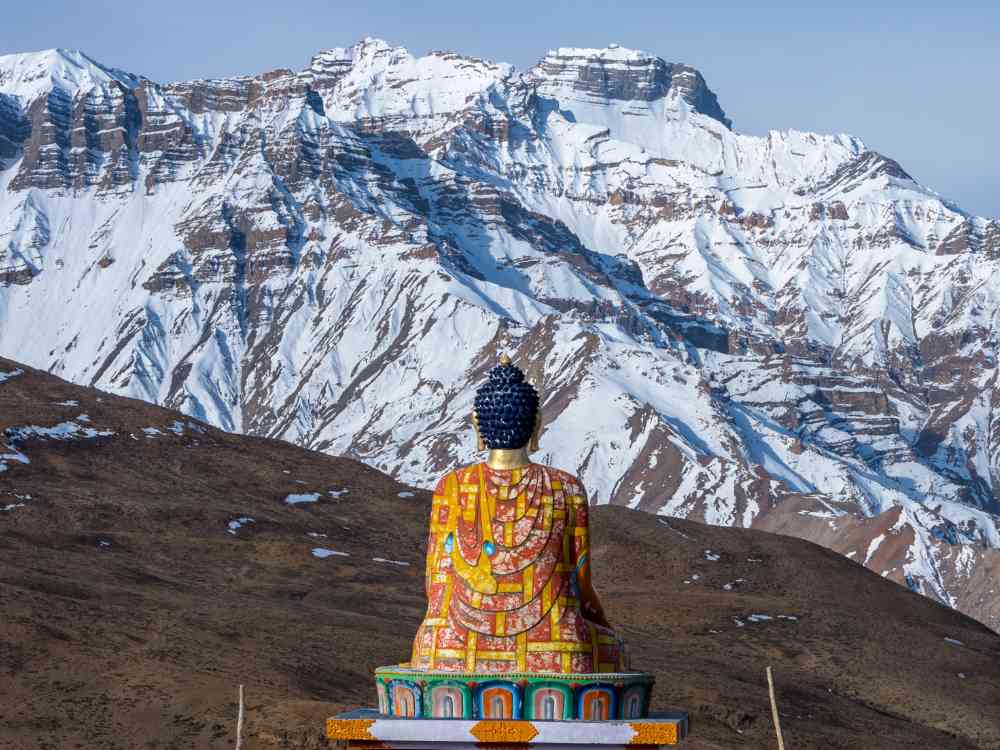
Whether you choose a cozy homestay or a comfortable hotel, your journey through this Himalayan wonderland will be memorable. Ultimately, the choice between a hotel or a homestay comes down to your travel style and preferences. Hotels in Spiti provide a more standardized experience, while homestays offer a more immersive, local experience, often at a lower cost. Consider what’s most important to you – amenities, privacy, cultural immersion, or budget – when deciding which accommodation is right for your trip. So, pack your bags, plan your stay, and get ready to explore the enchanting Spiti Valley.
Know more: 20 Best Places To Visit In Spiti Valley In 2024
FAQs
Is homestay cheaper than hotel?
Yes, homestays are typically much more affordable than hotels. This is because you’re staying with a local family, rather than staying in a commercial establishment. Homestays offer a more authentic travel experience than hotels at a lower cost.
Can kids be taken to Spiti?
Yes, kids can be taken to Spiti Valley. The region offers a unique cultural experience and scenic beauty that can be enjoyed by the whole family. However, the high altitude and rugged terrain may pose some challenges, so it’s important to plan accordingly and ensure the safety and comfort of children.
How many days are good for Spiti Valley?
The ideal duration for a Spiti Valley trip is around 7-10 days. This allows enough time to explore the key attractions, such as Key Monastery, Dhankar Monastery, Tabo Monastery, and Langza Village, while also allowing for acclimatization to the high altitude and flexibility in case of weather delays or road closures.
Do we need oxygen in Spiti?
Oxygen may be required in Spiti Valley due to the high altitude, which can cause altitude sickness. It’s recommended to carry portable oxygen canisters or have access to oxygen cylinders, especially if you have any pre-existing medical conditions or are traveling with elderly individuals or children. Acclimatization and staying hydrated are also important to prevent altitude sickness.
Which route is better to go to Spiti?
There are two main routes to reach Spiti Valley: the Shimla-Kinnaur-Spiti route and the Manali-Atal Tunnel-Kunzum La-Spiti route. The Manali route is shorter and more scenic, passing through the Rohtang Pass and Kunzum La. However, it may be closed due to snowfall for a longer duration compared to the Shimla route. The Shimla route is longer but offers the opportunity to explore Kinnaur Valley as well.
Which is the best time to visit Spiti Valley?
The best time to visit Spiti Valley is from June to September. During this period, the weather is mild, and the roads are generally open, allowing for easy access to the region. July and August are the peak tourist months, while June and September offer fewer crowds and more comfortable temperatures.
Which is better Lahaul or Spiti?
Both Lahaul and Spiti offer unique experiences, but the choice depends on your preferences and interests. Lahaul is known for its lush green landscapes, apple orchards, and Tibetan monasteries, while Spiti is famous for its stark, lunar landscapes, ancient monasteries, and high-altitude lakes. Spiti is more remote and rugged, while Lahaul is more accessible and has a milder climate. Ultimately, both regions are worth visiting for their natural beauty and cultural richness.
Enhance Your Spiti Experience: Spiti Tour Packages




